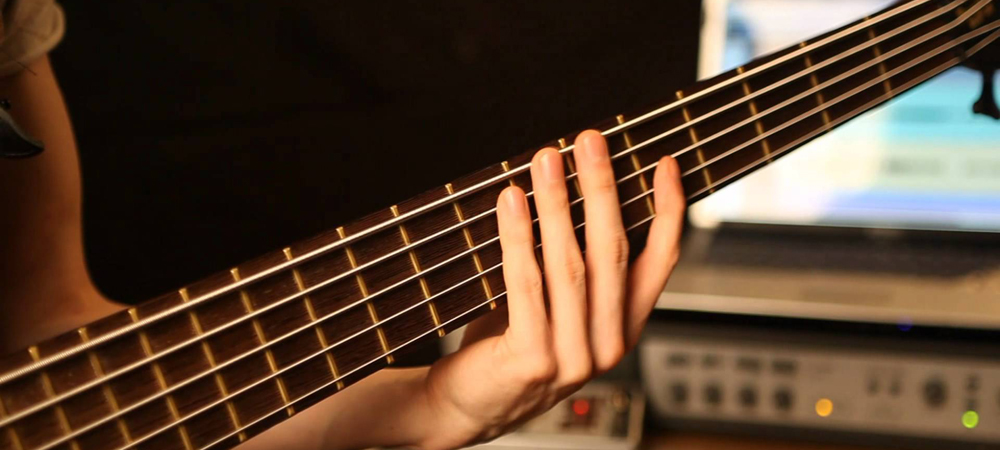FINGERS VS PICK
I found out pretty quickly that if I wanted to play with a pick – which is totally legit thank you very much even though some bass players are hardcore fingerstyle players – I couldn’t quite use guitar-style picking techniques because it wouldn’t sound right. For instance, as a guitarist I tend to use heavy palm-muting if I’m playing a particularly aggressive rhythm part, but if you palm-mute too much on the bass you end up loosing the body of the note and all you’re left with is a clicky-clicky pick attack. As long as you’re muting any unwanted open strings by flattening out your fretting hand a bit, you can pick pretty aggressively on the bass in a way that doesn’t tend to work so well for guitar. In fact, while I play with a pretty light touch on guitar, when I play bass I tend to beat that thing like it owes me money.
PLAYING WITH FINGERS
As guitarists we tend to have a natural hand posture for when we put down the pick. We tend to use our thumb and index finger to pick instead, and this works just fine on guitar. Just ask Jeff Beck. But if you’re playing bass, this doesn’t really let you hit those steady 8th-note or 16th-note pulses you might occasionally be called on to play. The traditional bass hand posture with your finger pretty much perpendicular to the strings may feel a little unnatural at first but it’s so popular for a very good reason. It works. You can either pedal back and forth between your index and middle fingers, or go for a Billy Sheehan-style three-finger approach, but whatever you do you’ll find that by using more than one finger to pick (and by using the thumb as an anchor for your hand instead of using it as a pick) you’ll be able to vary the decay of the note. It becomes really easy to mute the string in between each note for a staccato effect, or you can let the notes ring out for a much fatter sound.
TONE
There are no hard and fast rules about tone for bass, since what works for one player might not work for another. But where a guitarist might default to using a high gain sound with a bit of reverb in order to feel a little more comfortable and not so sonically naked, bass players have to use other tricks if they feel a little exposed by the immediacy of the instrument. For instance, if you’re using distortion you’ll most likely need to mix in some clean tone as well otherwise you’ll loose the fundamental purpose of playing bass in the first place. There are various ways to do this, from twin-amp rigs to distortion pedals that feature a dry mix control. And you might want to use pretty heavy compression to even out your playing dynamics too. Bass is often heavily compressed in the studio or live, so you might as well get used to hearing yourself like this, right? Then again, certain genres just won’t sound right with distortion or compression. If you’re playing jazz fusion you’ll want as dynamic a sound as possible.
THE TONE CONTROL
As guitarists we usually tend to keep our tone controls all the way open unless we’re playing jazz or going for that cool Gibson lead sound that Eric Clapton nicknamed ‘the woman tone.’ But bass players tend to use the tone control a lot more. Sometimes you might just want to smooth over the edges of your note attack. Other times you may wish to switch to a very deep, bassy rumble. Don’t be shy to explore what the tone control can do.

